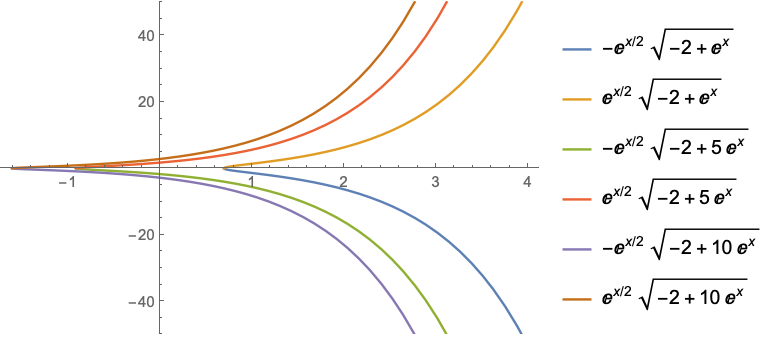I have 2 questions.
Bernoulli differential equation: $ y'(x)-y(x)=\dfrac{\mathrm e^x}{y(x)} $
When solving this step by step following this Clay Roose book [page 81, Example 3.13(M)], I get one solution $ \sqrt{\mathrm e^x \left(c_1 \mathrm e^x-2\right)} $.
When i solve this with DSolve, I get $ \left\{\left\{y(x)\to -\mathrm e^{x/2} \sqrt{c_1 \mathrm e^x-2}\right\}, \left\{y(x)\to \mathrm e^{x/2} \sqrt{c_1 \mathrm e^x-2}\right\}\right\} $.
Questions are:
Why is there difference and where is mistake in solving step by step?
I know how to plot if I am going step by step, but how to plot solve which I get with
DSolvebecause there are 2x branches of solve?

